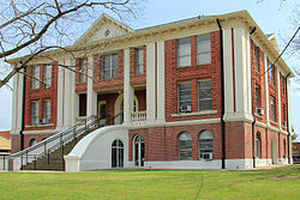Texas Counties
Texas is divided into two hundred and fifty-four counties, more than any other state. Texas was originally divided into municipalities, a unit of local government under Spanish and Mexican rule. When the Republic of Texas gained its independence in 1836, there were 23 municipalities, which became the original Texas counties. Many of these would later be divided into new counties. The most recent county to be created was Kenedy County in 1921. The most recent county to be organized was Loving County in 1931Sabine County, Texas
Sabine County Education, Geography, and History

Sabine County is a county located in the state of Texas. Based on the 2010 census, its population was 10,834. Its county seat is Hemphill. The county was organized on December 14, 1837, and named for the Sabine River, which forms its eastern border.
Etymology - Origin of Sabine County Name
the Sabine River, which forms its eastern border (Sabine is Spanish for cypress)
Demographics:
County QuickFacts: CensusBureau Quick Facts
Sabine County History
Sabine County is a county located in the US state of Texas. It was organized on December 14, 1837 and named for the Sabine River, which forms its eastern border. Its seat is Hemphill
Handbook of Texas Online
With the aid of Gaines Ferry, communities began to develop in the area. In 1825 Haden Edwards
received a land grant to settle 800 families there, but due to his involvement in the Fredonian Rebellion,
he was forced to leave Texas. In 1828 the town of Milam was established in the northern part of what is now Sabine
County. Lorenzo de Zavala was given a settlement land grant, but because a
section of his grant was in an area forbidden to foreign settlers, they did not receive title to their land until
1835. At that time a census listed the population of the Municipality of Sabine as 1,240. Shortly before the
outbreak of the Texas Revolution, Benjamin Holt, Jesse Parker,
and Absalom Hier served as delegates from the Sabine District to the Convention of 1832
in San Felipe de Austin. Mathew Caldwell and William Clark, Jr., served as
delegates to the Convention of 1836 and were signers of the Texas Declaration of
Independence. During the Runaway Scrape
Texans fled to Louisiana across Gaines Ferry. Benjamin F. Bryant, in response to
Sam Houston's call for troops, organized the volunteer Sabine Company, which
served at the battle of San Jacinto in 1836. After the victory at San Jacinto,
the government of the Republic of Texas began to organize. On December 14, 1837,
Sabine County was organized and its boundaries defined. John Boyd represented
the county at the First and Second congresses of the Republic of Texas, and Matthew Parker
was appointed the first chief justice. The county boundaries have remained unchanged since its establishment;
however, when the area was known as the Municipality of Sabine, it encompassed parts of present-day San Augustine,
Jasper, and Newton counties. Milam was the original county seat, but as early as 1850 settlers began to petition the
government for a more centrally located county seat on the grounds that Milam was more than five miles from the
geographic center of the county. In August 1858 an election was held, and 160 out of 260 votes were cast in favor of
relocation. However, the election was invalidated because there was not an official survey proving Milam was outside
the five-mile limit. On November 11, 1858, after a survey found Milam to be six and three-quarter miles from the
center of the county, another election was held, and a majority again voted for relocation. J. A. Whittelsey, Alex
Harris, John H. Smith, George L. Clapp, and C. K. Blanchard, acting as the Sabine County Court, used a survey by E.
P. Beddoe and ordered that the county seat be located at the center of the
county. The new town was named Hemphill, in honor of John Hemphill, a former
Texas Supreme Court justice, who at the time was serving as a United States senator More at
Matthew Hayes Nall, "SABINE COUNTY," Handbook of Texas Online (http://www.tshaonline.org/handbook/online/articles/hcs01),
accessed January 24, 2016. Uploaded on June 15, 2010. Modified on November 4, 2015. Published by the Texas State Historical Association.
Geography: Land and Water
As reported by the Census Bureau, the county has a total area of 577 square miles (1,493 km2), of which, 490
square miles (1,270 km2) of it is land and 86 square miles (224 km2) of it (14.97%) is water.
Neighboring Counties
Bordering counties are as follows:
- Shelby County (north)
- Sabine Parish, Louisiana (east)
- Newton County (south)
- Jasper County (southwest)
- San Augustine County (west)
Education
The following school districts serve Sabine County:
Brookeland Independent School District (partial)
Hemphill Independent School District
Shelbyville Independent School District (partial)
West Sabine Independent School District







